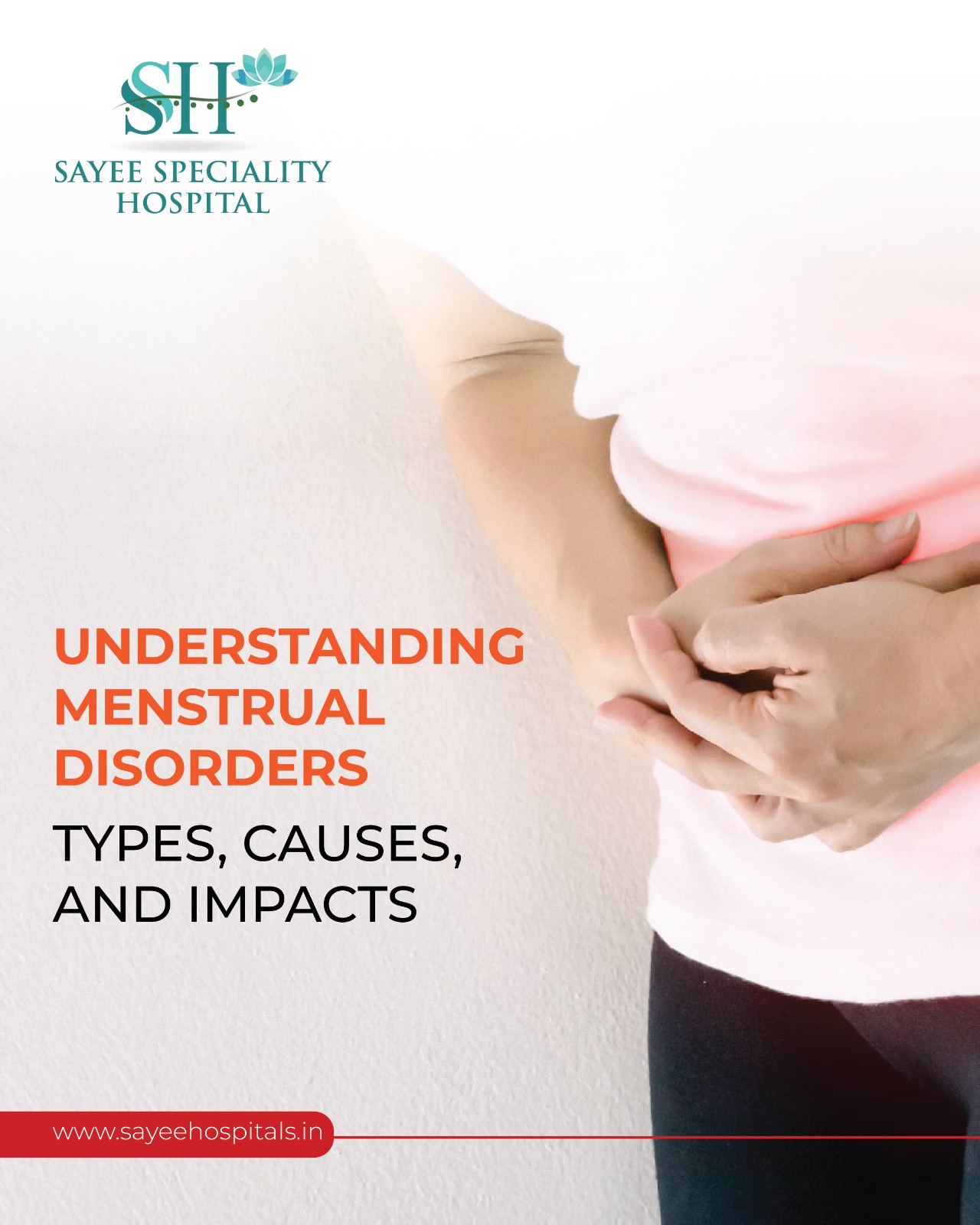Menstrual disorders are common conditions that can affect women’s physical and emotional health. They encompass a range of issues, from irregular cycles to excessive bleeding and severe pain. Understanding the types and causes of these disorders can help in managing the conditions effectively.
Types of Menstrual Disorders
Dysmenorrhea (Painful Cramps):
Dysmenorrhea involves intense cramping in the lower abdomen that may spread to the lower back and thighs.
- Primary Dysmenorrhea: Caused by uterine contractions during menstruation, often severe during heavy bleeding.
- Secondary Dysmenorrhea: Linked to medical conditions like endometriosis or uterine fibroids.
Menorrhagia (Heavy Bleeding):
Menorrhagia refers to prolonged or heavy menstrual bleeding. It involves soaking more than five sanitary pads daily or experiencing bleeding for more than seven days. Often accompanied by clotting and painful cramps, it may result from hormonal imbalances, fibroids, or other structural issues.
Amenorrhea (Absence of Menstruation):
Amenorrhea is categorized into two types:
- Primary Amenorrhea: The absence of menstruation by age 16, often due to delayed puberty or genetic factors.
- Secondary Amenorrhea: Periods stop for at least three months after previously being regular, often caused by pregnancy, stress, hormonal imbalances to name a few.
Oligomenorrhea and Hypomenorrhea:
Oligomenorrhea refers to infrequent periods occurring more than 35 days apart, often seen in adolescents.
Hypomenorrhea is characterized by light menstrual flow, which is common in early puberty or before menopause.
Premenstrual Syndrome (PMS):
PMS includes physical, emotional, and behavioral symptoms that occur a week before menstruation. It commonly affects women aged late 20s to early 40s.
Causes of Menstrual Disorders
- Hormonal Imbalances: Variations in estrogen and progesterone levels.
- Medical Conditions: Endometriosis, polycystic ovarian syndrome (PCOS), thyroid dysfunction, or uterine abnormalities.
- Lifestyle Factors: Excessive exercise, stress, or significant weight changes.
- Genetic Conditions: Bleeding disorders like von Willebrand disease.\
- Structural Issues: Uterine fibroids, polyps, or scarring.
Menstrual disorders, while common, can significantly impact a woman’s quality of life. Adopting a healthy lifestyle can reduce menstrual discomfort. Regular exercise, minimizing alcohol and smoking, and managing stress contribute to better menstrual health. During periods, adequate rest, warm beverages, heating pads, and balanced meals can help alleviate discomfort. Timely medical attention and self-care ensure better management of menstrual health challenges.
